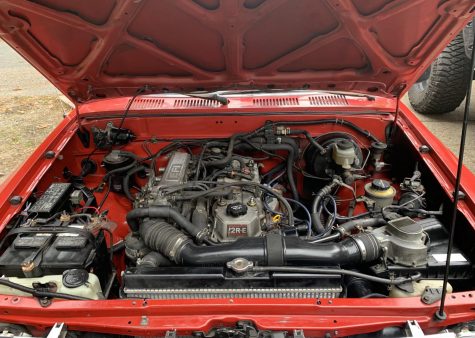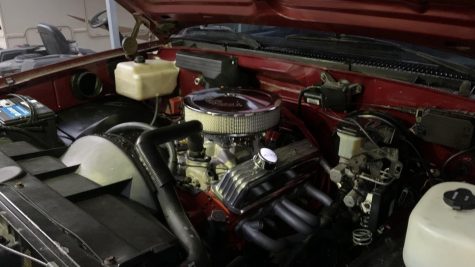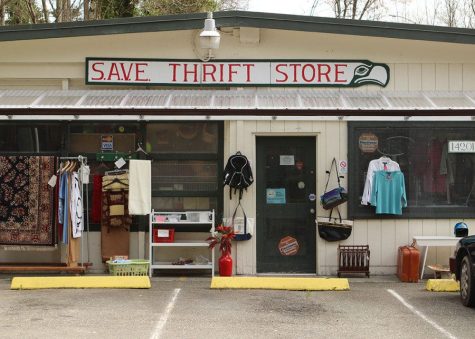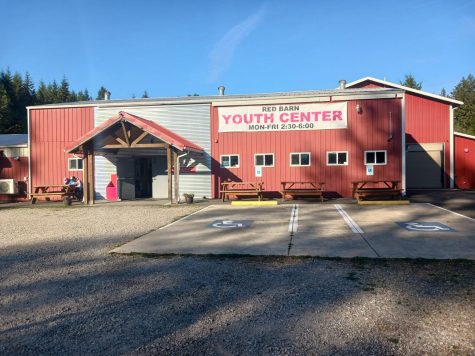Perks, problems and protocol of the parking policy
October 1, 2014
The school parking policy is a multi-faceted issue. Students and staff members often have trouble finding places to park and as the student population grows, the number of parking spaces does not. As a result, illegal parking has become a bigger problem. Nevertheless, few changes have been made to the parking policy, which encourages students to respect the rules, even if doing so means not parking in an ideal spot.
Parking spots are only for juniors and seniors, with few exceptions. Juniors and seniors can purchase parking passes from the bookkeeper for $30. Students with passes must then make sure that their green parking decals are displayed prominently on their cars and periodically check that those decals are still current.
Depending on grade level, students can park in the senior lot in front of the school, on the hill coming up to the school, or in the north campus lot (J-lot). The north campus lot is especially for juniors, though it has 10 free spots that are open to anyone, including sophomores and staff members. Juniors, seniors, and sophomores are all allowed to park in the dirt area of the hill in front of the school.
All parking spots by the bus turnaround and in the West Wing area (under the history portable) are reserved for teachers, and the spaces by the kitchen and cafeteria are for kitchen staff members. Visitor parking zones are designated by signs around the campus. Students parked in staff or visitor zones will be issued warnings and/or tickets if caught.
“There are always revisions of policy,” said school security officer Kip Bernt. “This year, we reinforce a standard: we give a warning to violators who are parked illegally or don’t have their decals, then a ticket, and then after so many warnings and tickets we talk to them. The only administrative changes this year are to give more of a chance. The goal is not to punish people but to educate them that there are rules.”
Although each parking ticket merits a 15 dollar fine, many students do not take the punishment or warnings seriously. Some students report that they have gotten away with not paying their parking fines, and this has a negative effect on the enforcement of parking laws.
“One big problem is TCC students parking in non-student areas when they are late and in a hurry,” Bernt said. The Running Start students who park illegally do so because they feel entitled to a decent parking spot, which they are. However, they need to understand that they are responsible for following the rules, even if doing so is not always convenient.
“Parking is a first stop in learning because it teaches you that you can’t always have your way,” Bernt said. “Students need to learn to work within the policies and understand that as long as they have their decals, they may not always be able to park close to their classes, but they will always have a place to park.”
“There are approximately 200 spots for students,” security officer Dawnee Gossage said. This means that since roughly half of the school’s 1400 students are of driving age, there is a big gap between the number of available parking spots and the number of student drivers. Although the school tries to remedy the situation and prevent overcrowding by only giving as many decals as there are parking spaces, many students and staff members complain that they have too much trouble finding places to park.
“I think it has always been a problem parking here…People pay for stickers but then often cannot find places to park. There is no enforcement for violators and no one ever gets their car towed,” swim coach and teacher Craig Brown said.
Obviously, the biggest problem is that there are not enough parking spaces.
Bernt and Gossage emphasized that the campus is space-prohibited and cannot accommodate everyone, and that parking is thus at a minimum. Unfortunately, many students just complain about the situation without coming up with possible solutions.
“If you go to your boss with complaints about something but offer no ideas or solutions to fix it, you are getting nothing done,” Bernt said. “If, on the other hand, you go to your boss with complaints about a problem and then offer possible solutions, you might be able to make things better. The parking situation here is like that.”
When students or staff members do offer their ideas about how to improve parking, the most common proposal is to add parking spots. Brown even went as far as suggesting that the front lawn be terraced off and transformed into a new lot. However, these people need to understand that the school property already has as many parking spaces as it can hold.
“You can’t create parking spots out of nothing,” Bernt said. There are only so many spaces for students, staff, and visitors, and new parking spaces can’t be pulled out of thin air. Instead, Bernt and Gossage recommend alternative modes of transportation.
“The school encourages kids to use the bus system or to carpool because parking is so limited,” Gossage said. Bernt especially favors the bus.
“Personally, I don’t see what’s wrong with the bus- it is free, and you don’t have to deal with getting gas or being in traffic,” Bernt said. Although all of this is true, many students avoid the bus because they enjoy the freedom and responsibility that comes with driving and feel that taking the bus sometimes leaves them with only a few minutes to get to class. The bottom line is that if students are willing to follow the rules of the road while driving themselves to school, they must also obey the school parking policy.
“If you are going to risk getting a ticket, is it really worth driving?” Bernt said.
It is always important to remember that even though the parking situation at school is far from perfect, it carries some benefits, such as teaching students to be responsible and respectful of the rules.
“I think that there are lots of positive things that come out of this situation,” Bernt said. “It prepares you for the real world.”












